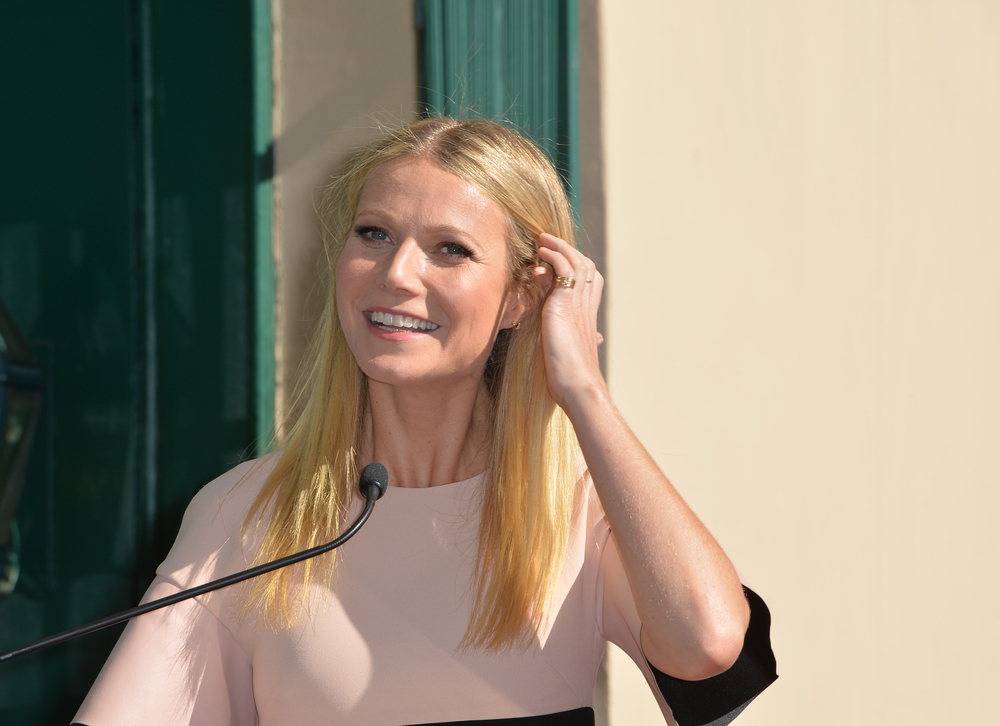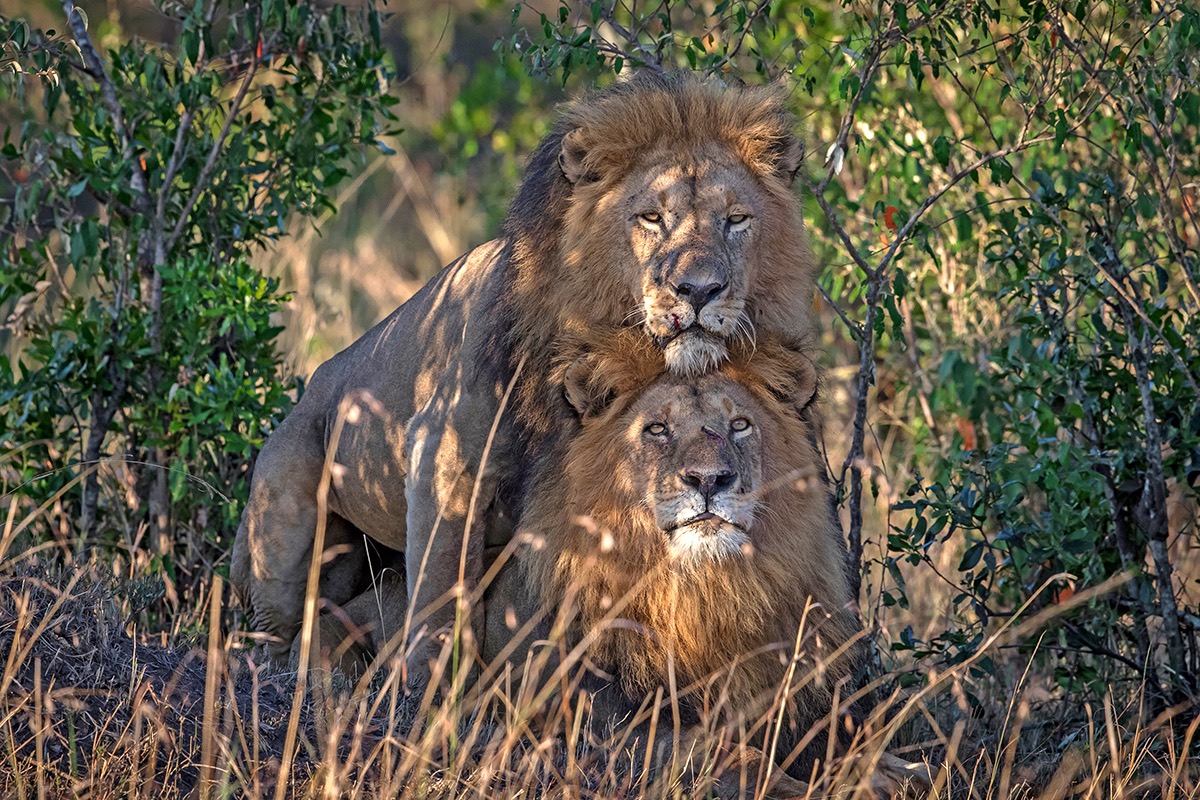Jade Eggs and Gay Lions: The Biggest Myths Debunked in 2017
2017 Debunked Myths

It's not uncommon for people to make faulty claims or misinterpret events when science is concerned. This includes the jade eggs that Gwyneth Paltrow said would boost reproductive health and whether those cuddling male lions photographed together in Kenya were gay.
Live Science continuously debunks questionable science news. Here a list of the top 10 stories we shined a light on in 2017.
Poopy coffee

An investigative report from the BBC revealed that ice in iced coffee had an unsavory add-in: fecal bacteria. In the report, the BBC tested ice at Starbucks, Caffe Nero and Costa Coffee, and ice from all three chains tested positive for fecal coliform.
But rest assured, fecal bacteria doesn't indicate that fecal matter (or poop) is in your coffee, too. These bacteria are found on many things in the environment, including fruits and vegetables, Ben Chapman, a food safety specialist and an associate professor at North Carolina State University, told Live Science. [Read more about the bacteria sting]
Jade eggs

Gwyneth Paltrow had a novel suggestion for women this year: put a 1- to 2-inch (2.5 to 5 centimeters) egg in your vagina for a time so it could "harness the power of energy work, crystal healing and a Kegel-like physical practice," according to her website, Goop.
But science begs to differ. There is no evidence suggesting that jade eggs have any benefit for women or their reproductive health, Dr. Leena Nathan, an assistant clinical professor of obstetrics and gynecology at UCLA Health in Los Angeles, told Live Science.
"There are no studies or evidence to show that jade eggs help with orgasms, vaginal muscle tone or hormonal balance," Nathan said. [ Read more about the jade eggs]
Amelia Earhart

There was a big hullabaloo this year about whether a woman in a black-and-white photograph was Amelia Earhart, supposedly after being taken prisoner by the Japanese on the Marshall Islands after her plane crashed into the Pacific.
The History Channel ran a special on the photo, offering circumstantial evidence that the woman was, indeed, the famous female pilot. The special also suggested that a man in the photo was Fred Noonan, Earhart's navigator.
But forensic experts Live Science interviewed had their doubts. This skepticism was vindicated a few days later when a Japanese military blogger found the photo predated Earhart's final trip, meaning the women in the photo couldn't be Earhart. [Read more about the mystery photo]
Scaramucci's timeline

During an interview in which he was trying to cast doubt on whether humans had contributed to climate change, Anthony Scaramucci — President Donald Trump's former White House communications director — gave Earth an extremely young age.
"You're saying the scientific community knows, and I'm saying people have gotten things wrong throughout the 5,500-year history of our planet," Scaramucci told CNN in 2016. (The interview came to light again in 2017, after he started working at the White House.)
But at 4.5 billion years old, Earth is much, much older than that. If Scaramucci was referring to human evolution, he's also off base, as modern humans arose between 200,000 and 300,000 years ago. It's possible he was referring to written human history, in which case he's still a bit off. Archaeologists have found Sumerian text dating to about 3200 B.C., or about 5,200 years ago. [Read more about the age Earth and humans]
Gay lions?

Two male lions photographed mid-embrace made many people wonder whether the lions were gay.
But this mounting behavior isn't actually sexual, experts told Live Science. Rather, these lions were likely strengthening their social bond. Males in the same pride are often affectionate with one another. They'll flop down on each other, lick each other and rub each other's faces, Craig Packer, the director of the Lion Research Center at the University of Minnesota, told Live Science.
Sometimes, males even mount other males, as they did in this instance. [Read more on the two male lions]
Placenta-eating

Kim Kardashian and other celebrities have helped make eating the placenta a fad, but doctors advise against it.
The practice, know as placentophagy, has no health benefits, and may even be risky for mother and breast-feeding baby, a new review of studies finds. These risks include viral and bacterial infections, both for the mother and the baby, if the baby is breast feeding. [Read more about the placenta study]
Sea monster

When a decomposing, sea monster-like blob washed ashore in Indonesia, people weren't sure what to think.
But the dead, hulking mass turned out to be a rotting whale carcass, likely that of a baleen whale, Alexander Werth, a whale biologist at Hampden-Sydney College in Virginia, told Live Science.
"There is lots of stuff in the ocean that we don't know about — but there's nothing that big" that remains unknown, Werth said. [Read more about the mysterious whale]
Trump's exercise theory

President Donald Trump told a New Yorker reporter that human bodies have finite energy resources, which is why he eschews exercise.
"Other than golf, [Trump] considers exercise misguided, arguing that a person, like a battery, is born with a finite amount of energy," the New Yorker wrote.
But that's not the case. Exercise does, indeed, use energy. But a body's fuels are restored when a person eats, meaning people are constantly supplying their bodies with new energy. Moreover, exercise can make the body more powerful, and it may even help people live longer. [Read more about exercise's effects on the body]
Artificial sweeteners

People often reach for Splenda or Sweet-n-Low when they want to sweeten a drink. But that might be a bad idea, a new review shows.
A review of more than 11,000 studies shows that for overweight individuals or those with high blood pressure (hypertension) or diabetes, the benefits of consuming zero-calorie, "non-nutritive sweeteners" were modest to nil, Live Science reported. For other people, there was an increased risk of weight gain, type 2 diabetes, hypertension, stroke and heart disease.
Consider this myth about zero-calorie sweeteners debunked. [Read more about the review on sweeteners]
Grandma shark

Strangely, there were recent reports that scientists had discovered a 512-year-old shark. Sorry to sink this inaccuracy, but it's not true.
Rather, a 2016 study on 28 female Greenland sharks (Somniosus microcephalus) suggested the sharks were about 272 years old, and could potentially be as much as 512 years old, Live Science reported.
Of course, a 272-year-old shark is still quite impressive. It still deserves a round of applause. [ Read more about these very old sharks]
Sign up for the Live Science daily newsletter now
Get the world’s most fascinating discoveries delivered straight to your inbox.

Laura is the archaeology and Life's Little Mysteries editor at Live Science. She also reports on general science, including paleontology. Her work has appeared in The New York Times, Scholastic, Popular Science and Spectrum, a site on autism research. She has won multiple awards from the Society of Professional Journalists and the Washington Newspaper Publishers Association for her reporting at a weekly newspaper near Seattle. Laura holds a bachelor's degree in English literature and psychology from Washington University in St. Louis and a master's degree in science writing from NYU.










